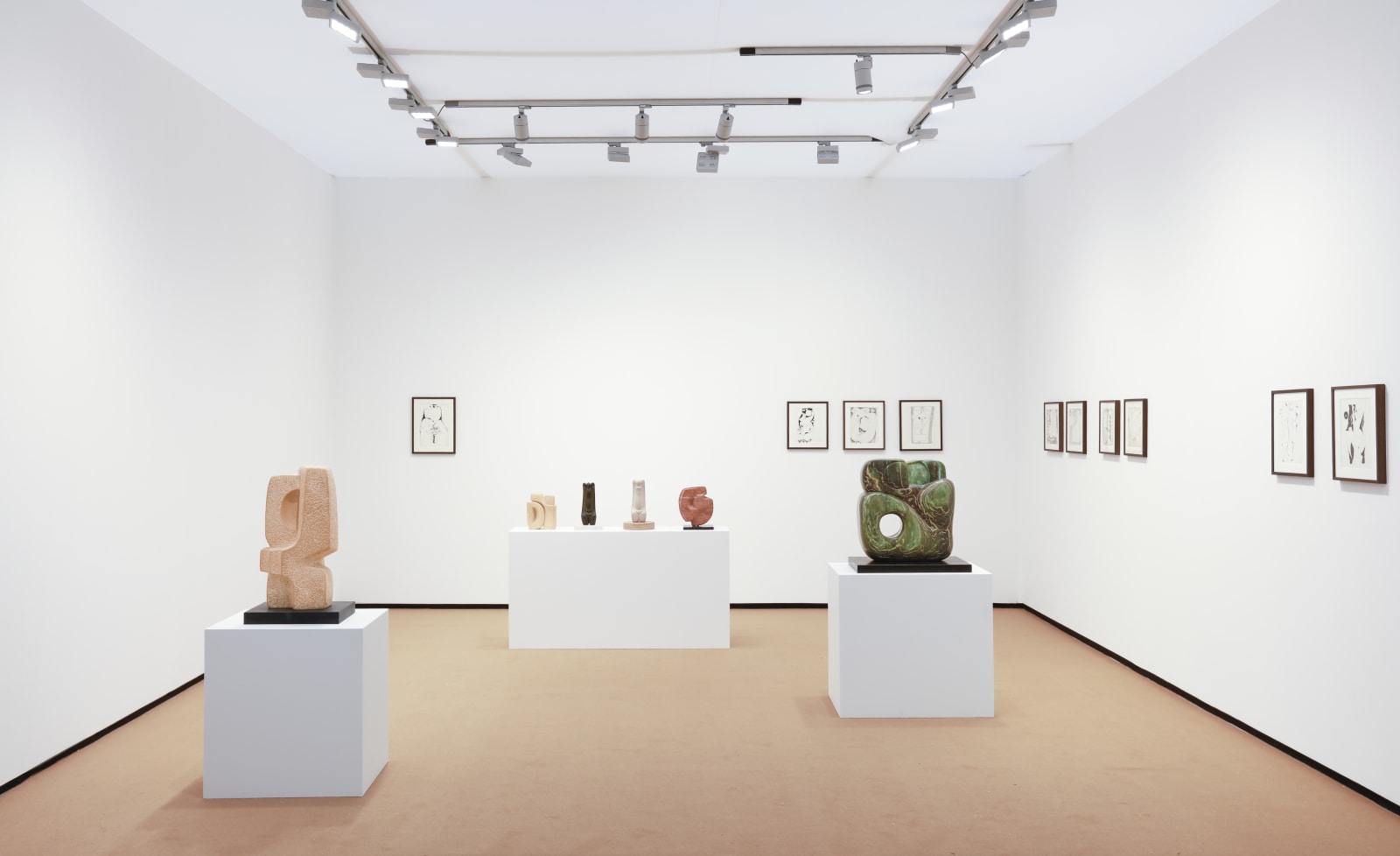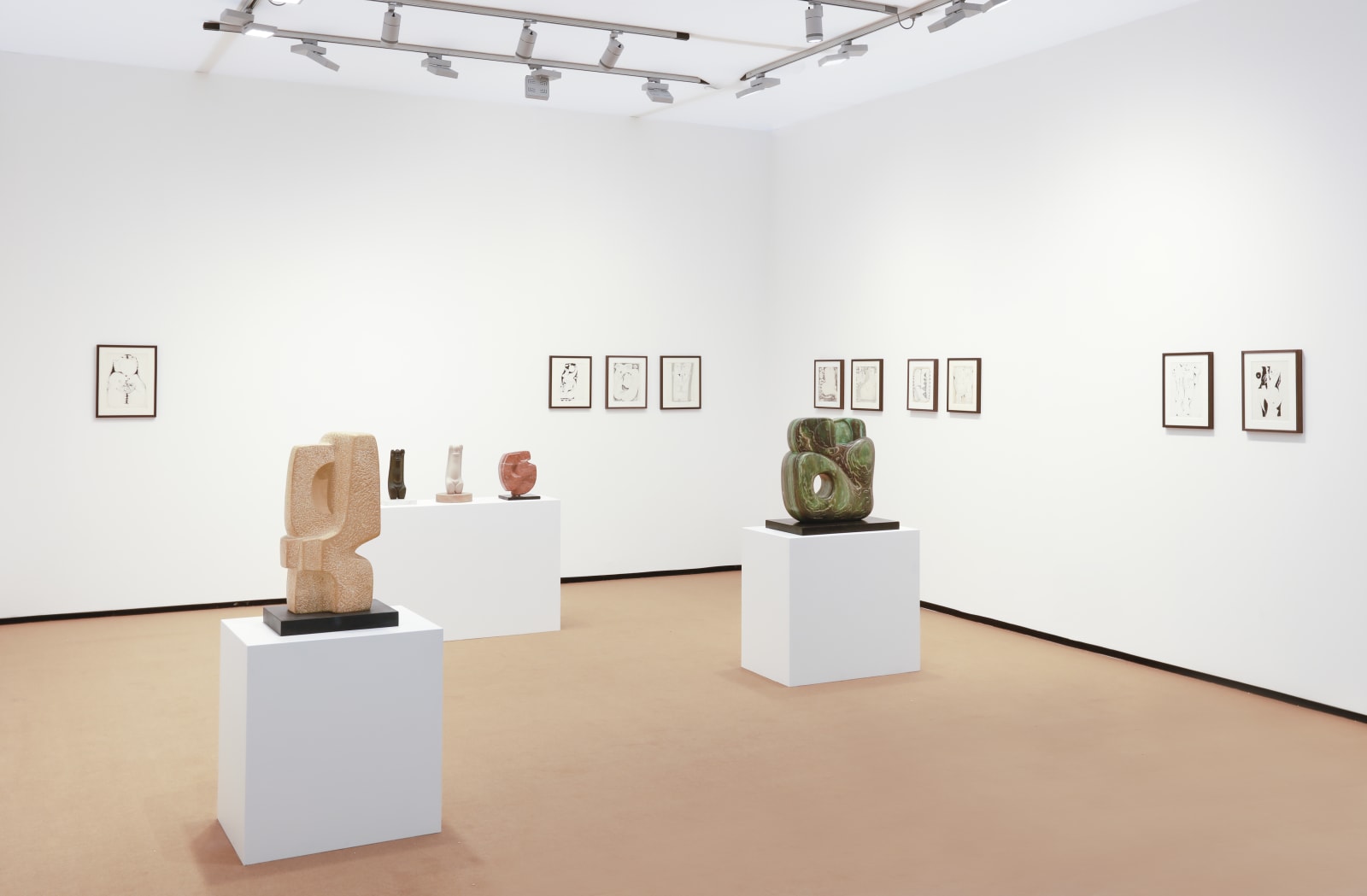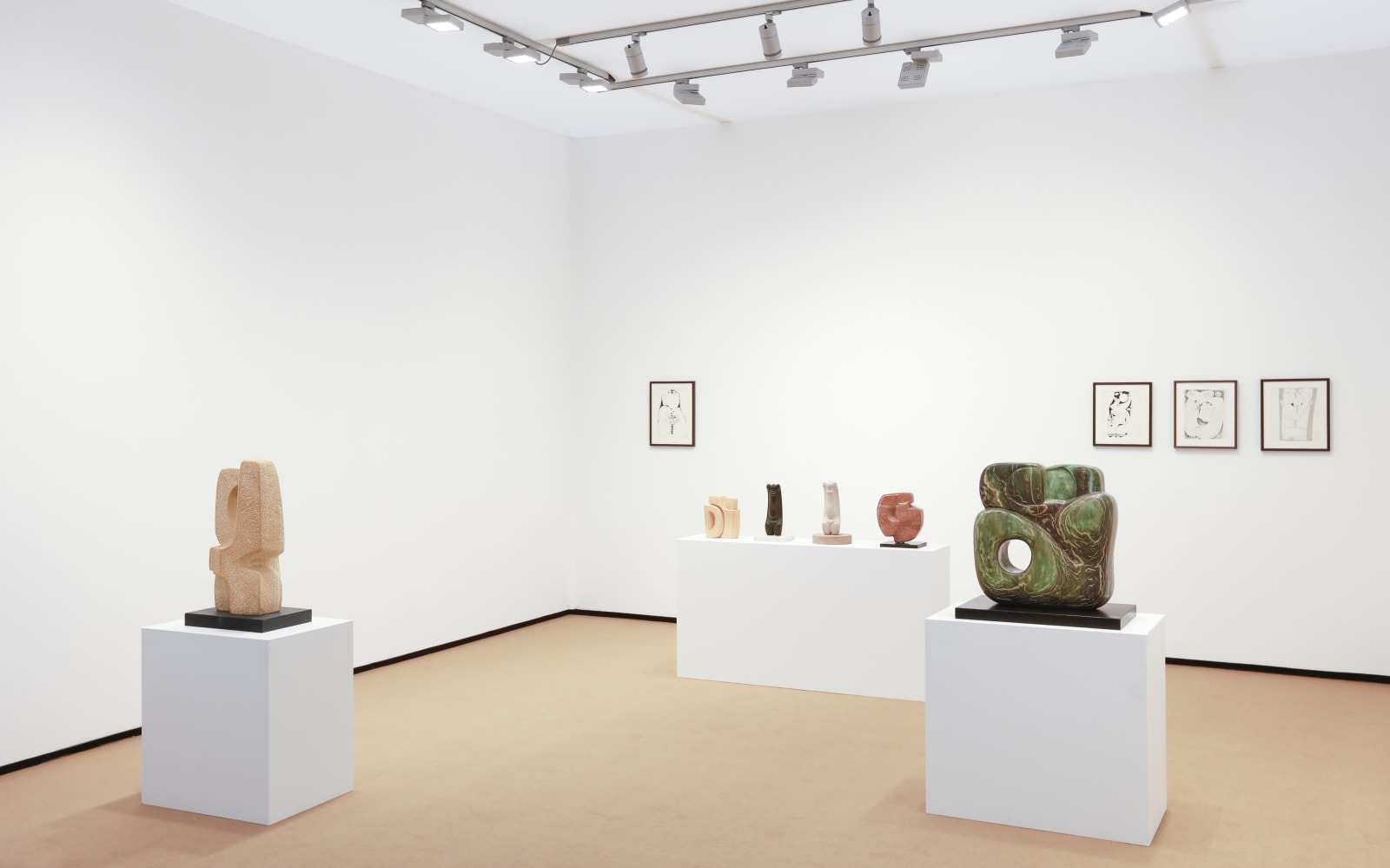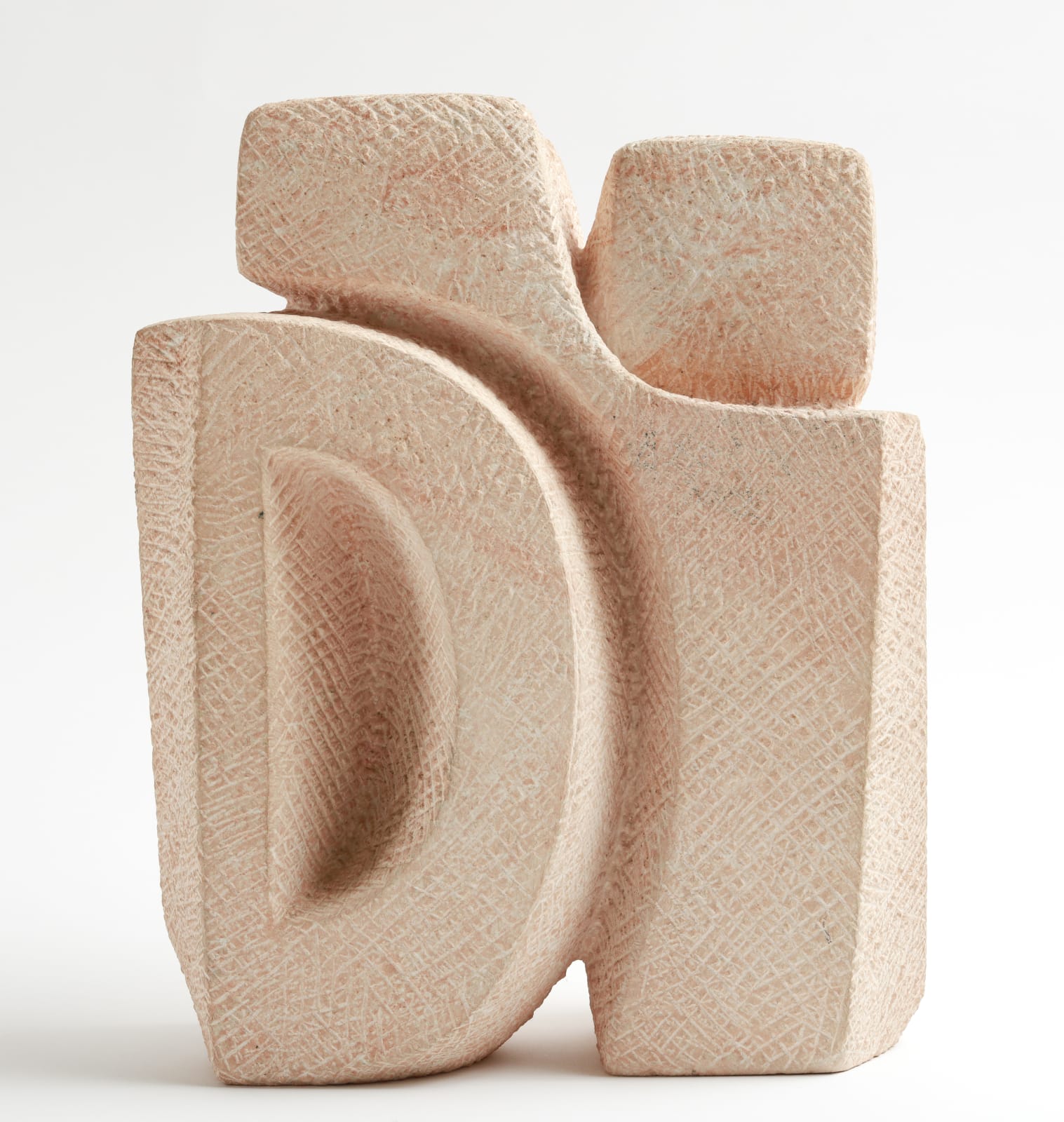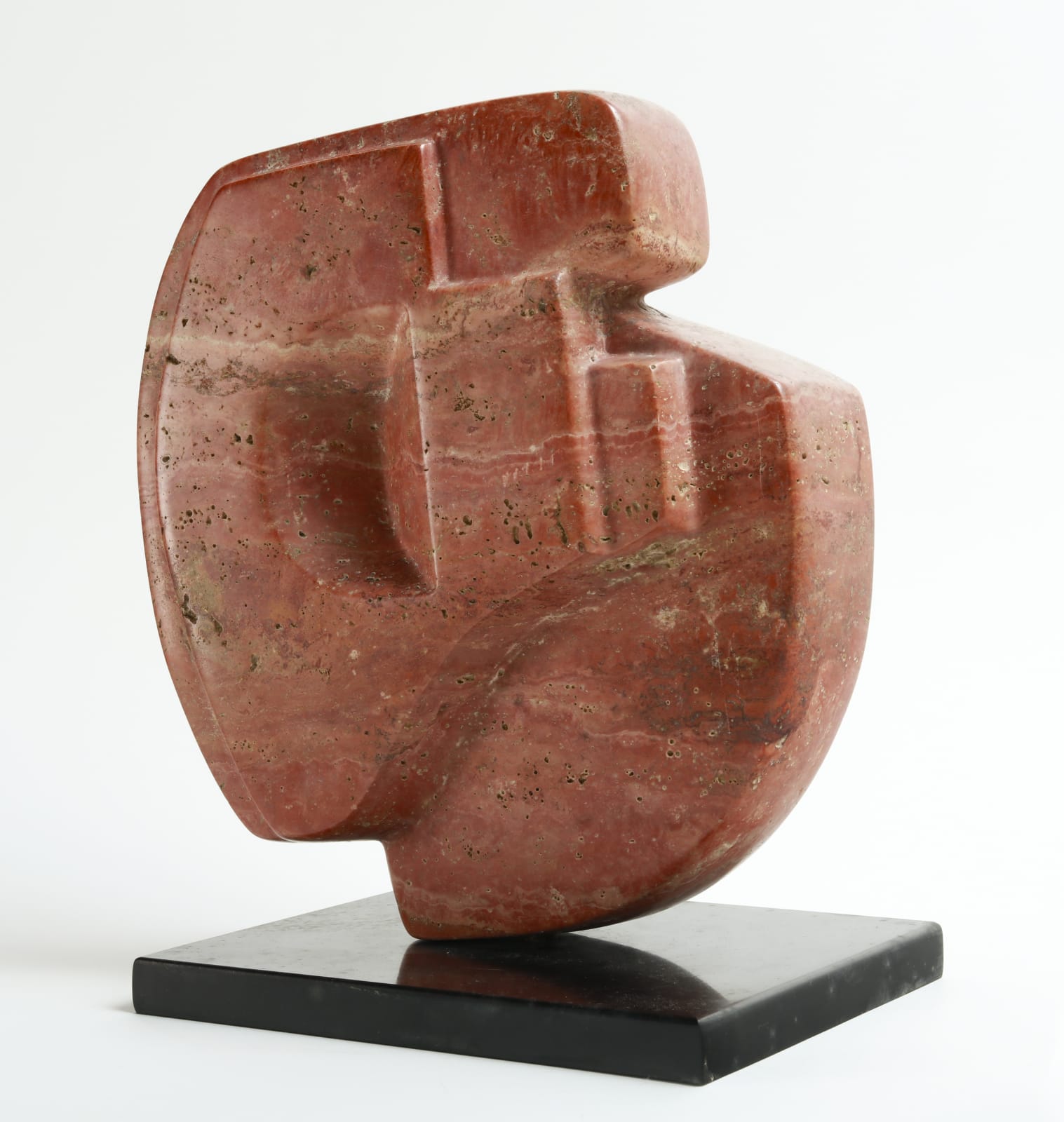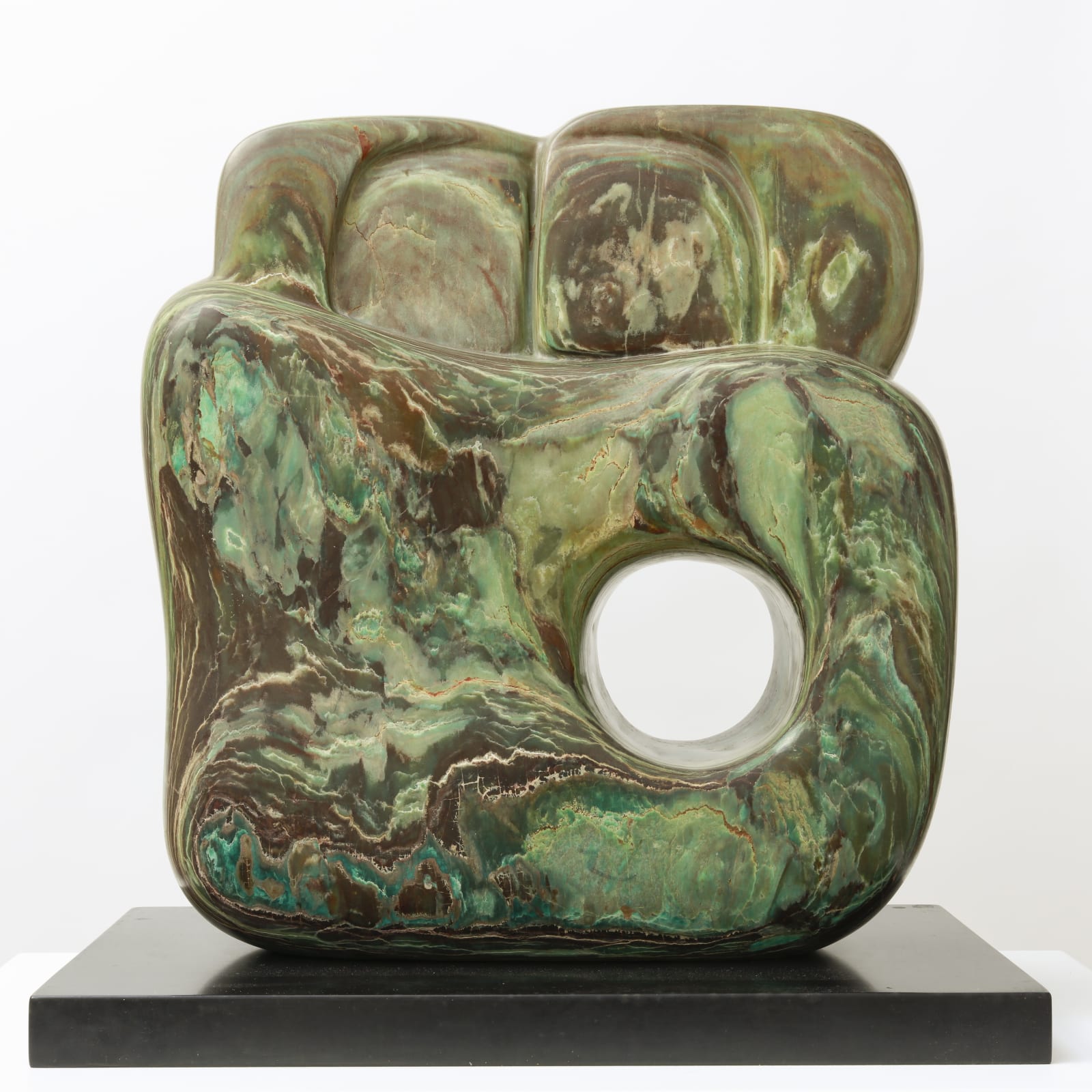Lawrie Shabibi is pleased to announce its return to Frieze Masters, held in Regent’s Park, London, from 15 to 19 October 2025.
Presenting a selection of works by Mona Saudi (1945 – 2022), one of the leading sculptors of her generation in the Arab world. The presentation brings together six stone sculptures and eleven works on paper produced between 1973 and 1978, offering a cross-section of her five-decade practice.
Born in Amman in 1945, Saudi moved to Beirut in 1962 before leaving briefly for Paris shortly afterwards, to study sculpture at L’École Nationale Supérieure des Beaux-Arts. She then returned back to Beirut in 1969 where she became a prominent figure in the Beirut art scene until her death in 2022. From the outset, she chose to work primarily in stone—a deliberate choice for its timelessness, density, and inherent variation in color and pattern. She worked with marble from Carrara, pink limestone from Irbid, and black diorite from Syria. For Saudi, sculpture was not a mode of representation but a dialogue with the material; she believed the form of each piece was already latent within the stone.
Her practice is informed by a synthesis of ancient Middle Eastern sculpture—Egyptian, Sumerian, and pre-Islamic—with modernist abstraction. She was particularly drawn to the notion of latent movement in Egyptian and archaic Greek sculpture, and deeply influenced by Constantin Brancusi’s reduction of form to essential elements. Her sculptures merge symbolic simplicity with spatial complexity, reflecting her exploration of the Arabic concept of Takween—translated as both “creation” and “formation.”
The stone sculptures on view are emblematic of her engagement with universal themes such as fertility, growth, and love. Her formal language—rounded volumes, continuous curves, and totemic verticals—combines a visual economy with metaphorical depth. The works maintain an equilibrium between monumentality and intimacy, whether installed in public spaces, such as outside the Institut du Monde Arabe in Paris, or held in institutional collections such as the British Museum.
Among the works on view is Fertility (1971), an early sculpture that marks Saudi’s transition from drawing to stone as her primary medium. Created shortly after her return to the Middle East from Paris, the work reflects her engagement with sculptural abstraction and her exploration of womanhood, creation, and continuity.
Notably, there are two distinct versions of Fertility, both dated 1971. The first is carved in limestone and represents Saudi’s initial expression of the theme, merging modernist aesthetics with regional materials. The second is a unique bronze cast—unusual within her practice for its close adherence to the original stone form, rather than a reinterpretation.
Both versions of Fertility were shown in Beyond Form: Lines of Abstraction, 1950–1970 at Turner Contemporary, UK, in 2024, underscoring the enduring significance of Saudi’s sculptural language within broader narratives of modernist abstraction.
Also on view is Mother/Earth (1981), in which Saudi fuses the archetype of the maternal body with the generative force of the earth. The sculpture’s softly rounded forms convey notions of shelter and fertility, offering a symbolic reflection on creation as both a cultural and spiritual force. Saudi always counted this piece among her personal favourites, highlighting its importance within her body of work. Variations on Stone (2001) continues this exploration through a modular composition of carved forms, where subtle shifts in proportion and curvature echo natural rhythms.
Mona Saudi’s Earth Lovers (1992) was conceived as an abstract organic form, that suggests two intertwined figures, conjuring human intimacy while also alluding to a broader union with the natural world. Rounded, interlocking volumes replace direct figuration, underscoring her sustained interest in fertility, growth, and continuity. The title signals her philosophy of “being of the earth,” reflecting both a poetic vision of sculpture as a celebration of life and creation, and a deep concern for the relationship between humanity and its environment.
Alongside the sculptures, the presentation includes eleven rarely seen works on paper produced between 1973 and 1978. These drawings remained private during the artist’s lifetime and were first exhibited publicly in 2023. Executed during the early years of the Lebanese Civil War (1975–1990), they reflect Saudi’s precise technique and emotional register. Through delicate lines and restrained compositions, she explored themes of love, resistance, and interior life. These drawings function as a visual diary, documenting personal and historical memory, and provide important context for the conceptual underpinnings of her sculptural work.
The recurring motif of embracing figures conveys a quiet yearning for closeness—whether to another person or to the land—and imbues the works with a sense of intimacy and longing. As Saudi once reflected, “All my work springs from [my] poetic memory,” underscoring the emotional and lyrical foundation of her visual language. Several of the works on paper possess a rhythmic and fluid quality, with ink lines that curve and extend across the pages, giving the compositions a sense of motion and vitality.
Together, the selection highlights the continuity of Saudi’s vision across mediums, underscoring her position as a key figure in the development of modern sculpture in the Arab world. She remains one of the few artists of her generation to work exclusively in stone, a material she regarded as both elemental and enduring.
 Booth S18
The Regent's Park, London, UK
Booth S18
The Regent's Park, London, UK
